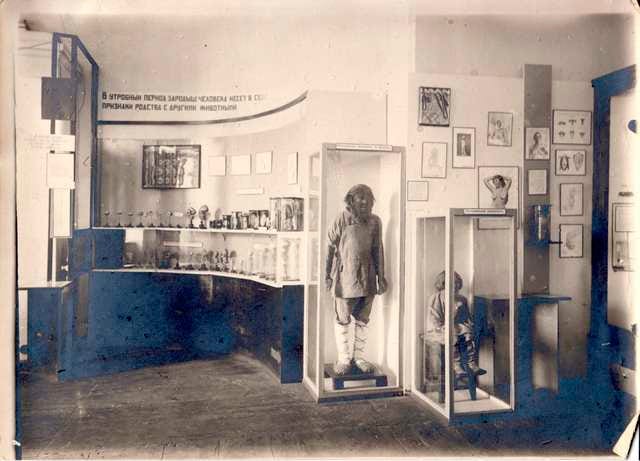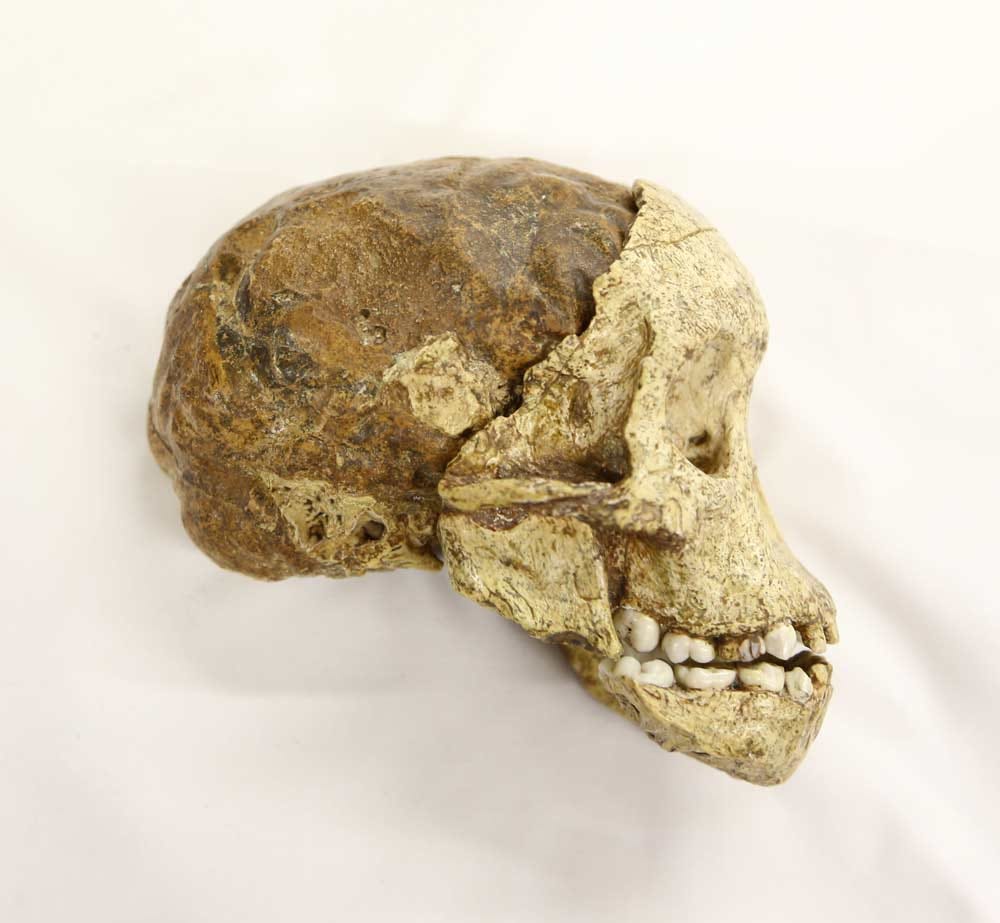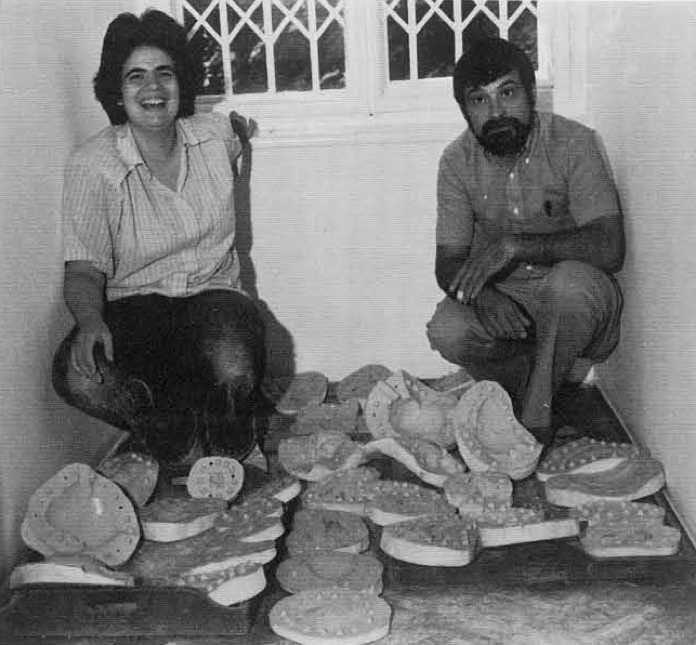Castmaking and early data dissemination in paleoanthropology
The earliest form of data dissemination was the distribution of high fidelity copies of fossils.
I pointed earlier this week to an article by Lydia Pyne about perceptions of Neandertals over the years, and hinted at a second recent article. That article is “To Russia, With Love”, and details a correspondence between Raymond Dart, discoverer of the Taung skull, and a Professor Plissetzky, director of the State Museum and the Institute of Anthropology in Moscow.
Plissetzky wrote to Dart requesting a cast of the Taung child for a museum exhibit. Pyne followed the correspondence in the archives of the University of the Witwatersrand, which includes original copies of the letters, order requests and photographs of the anthropological exhibition at the Institute of Anthropology.

Ultimately Dart arranges to have a cast of Taung sent to Moscow, for exchange of some Russian casts. I don’t know if the cast of the Kiik-Koba foot at the Evolution Studies Institute (originally from the Medical School collection) resulted from this exchange, but it might well have.
The episode is interesting on its own, and Pyne uses the historical event to explore the history of casting in paleoanthropology. She recounts the origin of hominin fossil casting under the direction of R. F. Damon at his company in London. Originally devoted to collecting and selling original fossils, production and sale of fossil replicas to museums and institutions became an increasing part of their business during the early twentieth century.
Dart held the “copyright” on the Taung Child fossil, according to R.F. Damon & Company’s paperwork and Dart was paid royalties based on how many fossil casts were sold. Dart worked with the company’s Mr. F.O. Barlow on both the nitty-gritty details of creating and describing the fossil casts as well as in sorting out the financial ledgers; dozens of letters between Barlow in London and Dart in Johannesburg hashed out the fossil’s financial deals. When Dart originally approached R.F. Damon & Company, he thought that each fossil cast ought to sell for more than what other, similar hominin casts had sold for (e.g. Pithecanthropus). Mr. Barlow begged Dart to reconsider his position about the cost of the cast, as Barlow noted, “The prices you suggested would result in killing the demand and would create in my customers a feeling of resentment which I am not willing to incur.” Once the question of price was properly sorted out, the company sold a lot of casts.
For more information on the history of casting fossil hominins, I recommend an article by Alan Mann and Janet Monge, published in the University of Pennsylvania Museum magazine Expedition in 1987: “Reproducing Our Ancestors”. Mann and Monge have a detailed description of Barlow’s cast-making technique.
In the 1920s and 1930s, F.O. Barlow, a leading mold and cast maker in Europe, fabricated more than 600 plaster-of-Paris molds of hominid fossils. In order to ease the removal of plaster from an often fragile fossil specimen, these molds were made of many pieces, waxed and keyed to each other. A complete mold of a skull, for example, could easily be composed of more than 100 plaster pieces, each replicating a small part of the whole fossil; fitted precisely together, they form what can only be described as a large three-dimensional jigsaw puzzle. Casts produced from Barlow’s molds have a surprising amount of detail. They appear to be dimensionally accurate replicas, but many cannot be adequately assessed because in the meantime, the original fossil has been modified, reconstructed, or even damaged. About 500 Barlow-produced molds of fossil hominid bones have survived, and are now in The University Museum Casting Program collection .
The article goes on to describe the development of the casting program of the Wenner-Gren Foundation for Anthropological Research, which was the source of the majority of fossil casts now used in university teaching and research. As they describe, Wenner-Gren instituted a research initiative to find better materials and better mold-making techniques for fossils. Molds are presently made from flexible silicone instead of hard plaster-of-Paris, and the resulting casts in epoxy reproduce the details of fossils with much higher fidelity than the old plaster versions. With this new mold-making technology in hand, Wenner-Gren instituted a much broader program of producing and distributing casts of fossil hominins than ever before:
From 1962 to 1976 the WennerGren Foundation sent mold makers all over the world. Using techniques developed by Gilbert, they were able to produce over 900 molds of the most famous human and primate fossils, including Zinjanthropus or “Nut Cracker Man,” Mrs. Ples and the Taung child from South Africa, and Kabwe Man. During this time the Wenner-Gren Foundation produced nearly 16,000 high-quality plastic casts of fossil remains, and distributed them to scientists and research and teaching institutions throughout the world.
In addition to the historical context of casting, Mann and Monge gave a detailed account of the process of making molds and casts, and the importance of the “patterns” that enable the long-term archiving of the shape of original fossils, sometimes even after the fossils themselves have been lost or damaged by later study.
Inclusion of fossils in a museum collection does not guarantee their safety. Ancient bones are very frequently fragile: some are only partially mineralized or fossilized, others are not mineralized at all. Often, they are held together by toothpicks and bits of wire. With the interest in human origins expanding each year, and the number of professional scholars involved in active research steadily increasing, these fossils are being handled, examined, photographed, measured, and broken with greater frequency. Many researchers have had the experience of examining a fossil they had first looked at several years before, only to find that, due to handling or an accident, the fossil specimen is now different in appearance.
The PDF version of the article (at the link) includes illustrations of the process of molding and casting; these are not included in the HTML version of the article.
In addition to its importance as a way to archive fossils, the casting process retains its original role of communicating the three-dimensional properties of casts and artifacts to international colleagues. The world created by Barlow, Damon and others was an enormous advance over the previous generation, in which only a fortunate few internationally-traveled scientists might have examined the primary evidence of fossil forms.
International travel has become much easier, which has enabled many more researchers to see fossil collections first-hand in their countries of origin. But in the past the fossil record was very sparse, while today the fossil record is an order of magnitude greater. No expert has seen every important original fossil. Most major fossil collections and research universities keep collections of casts to facilitate the study and comparison of these fossils. We now train a much broader number of students in the details of the human fossil record, not only those who will enter the speciality of paleoanthropology, but also those who will bring insights about human evolution into fields as disparate as archaeology, human ecology, evolutionary medicine. Paleoanthropology relies upon the widespread distribution of high-resolution casts of fossils; without these casts, what we do would not be science.



